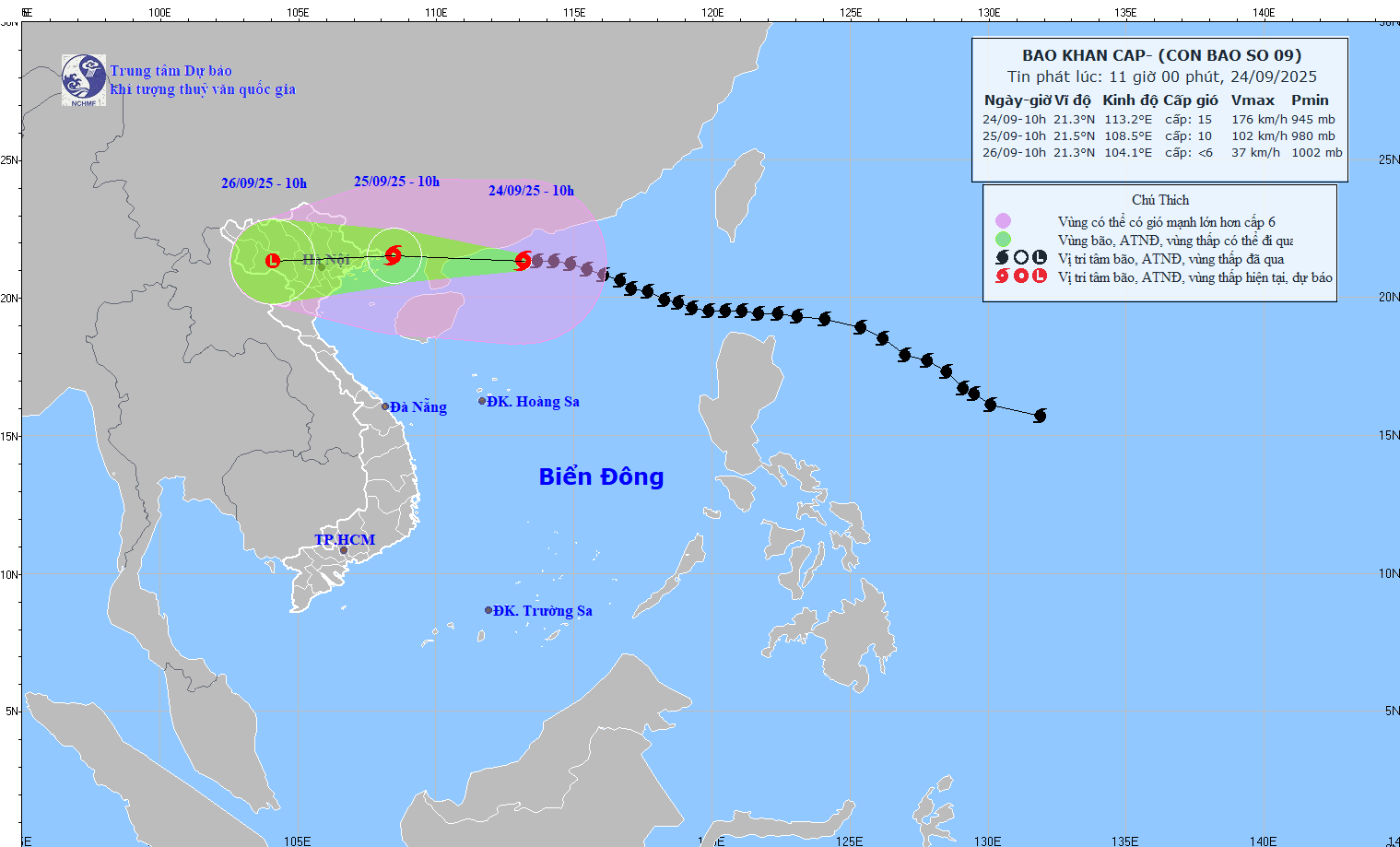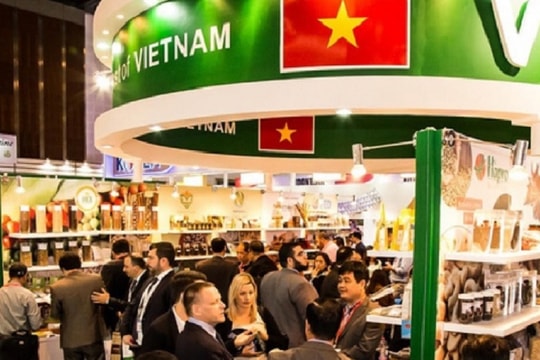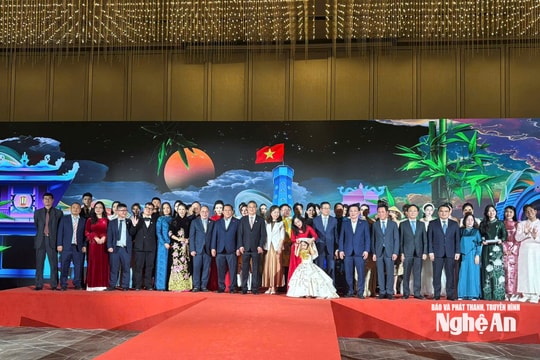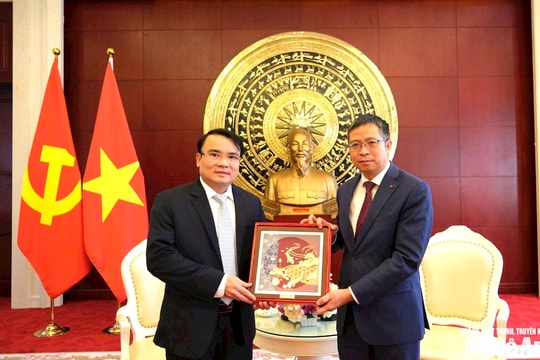Does China's Advanced 5G Chip Make the US Worried?
(Baonghean.vn) - US lawmakers are concerned and believe that the launch of the advanced 5G chip with 7 nanometer (nm) process on the Mate 60 Pro smartphone line of Huawei technology group (China) needs to be investigated.

The launch of China's leading multinational telecommunications and network equipment group Huawei's latest smartphone Mate 60 Pro last week, using 7nm 5G semiconductor chip technology, showing a breakthrough in the development of new 5G processors, has surprised and worried the US and many Western countries.
Since then, the world, especially the Chinese, have been crazy about the smartphone's network speed. It looks like a typical 5G smartphone, and the fact that the Chinese telecom giant has produced it despite US sanctions is even more groundbreaking.
It all started when TechInsights, a company that specializes in researching electronic components inside devices of many of the world's largest technology companies, conducted a "dissection" of the latest 5G smartphone Mate 60 Pro manufactured by Huawei, revealing that the Mate 60 Pro is equipped with the new Kiri9000s chip manufactured in China by Semiconductor Manufacturing International Corporation (SMIC).
The chip is the first to use SMIC's cutting-edge 7nm process technology, showing that the company has the technology to create such a chip despite extensive US efforts to limit China's access to advanced foreign chip technology.
Analysts say it is unclear whether SMIC and Huawei can produce chips at scale and at reasonable costs. But the chip in the Mate 60 Pro raises questions about the effectiveness of Washington's global campaign to block Beijing's access to advanced technology.
The Mate 60 Pro smartphone comes three years after Huawei last released a 5G smartphone, the Mate 40 series. However, Huawei has not publicly announced that this is a 5G smartphone, only saying that the Mate 60 Pro is “the most powerful Mate model ever.”
In a report, TechInsights pointed out that SMIC manufactured these chips using a 7nm process, known as the N+2 node, fueling speculation that the chipmaker is secretly helping Huawei bypass strict US technology sanctions. For context, SMIC was added to the US Entity List in December 2020, while Huawei was added to that trade blacklist in May 2019.
That is perhaps why experts say a breakthrough in the development of new 5G processors in China is expected to not only prompt another round of investigations by Washington authorities but also intensify the US-China tech war.
Meanwhile, analyst Edison Lee of the financial group Jefferies Equity (USA) said in a recent interview that the launch of this advanced chip could also cause more debate in the US about the effectiveness of sanctions imposed by the Washington government in recent times.
To some extent, however, the breakthrough is not surprising as experts, including US-based semiconductor companies such as Qualcomm and Nvidia, have argued for fewer sanctions as the Washington administration's trade restrictions only add to China's drive for technological self-sufficiency while hurting the commercial interests of US companies.
How does the US react to Huawei and the 5G miracle of this technology corporation?
First, current regulations require any company that intends to supply Huawei with US technology, which is present throughout SMIC’s operations, to receive approval from Washington authorities. US lawmakers say China’s leading chipmaker needs to be investigated because it is unclear whether SMIC has a US license to supply Huawei.
The US believes that SMIC violated sanctions by supplying components to Huawei. At a briefing at the US embassy in The Hague (Netherlands) on September 5, US Congressman Michael McCaul said: "It seems certain that SMIC violated sanctions. This company continues to try to seize our intellectual property."
On the other hand, Mike Gallagher, Chairman of the House Committee on Competition with China, said that it is time to “end all US technology exports to both Huawei and SMIC to make it clear that any company that disregards US law and undermines national security policy will be excluded from our technology.”
US lawmakers also stressed that the fact that the US Bureau of Industry and Security (BIS) granted US companies $23 billion in licenses to sell technology to Chinese companies in the first quarter of last year is evidence enough to show that the US government may have been too lenient on this issue.
South Korean semiconductor maker SK Hynix begins investigation
Huawei's Mate 60 Pro uses SK Hynix's LPDDR5 flash and NAND memory, TechInsights analysis shows. TechInsights notes that while Chinese suppliers almost entirely supply smartphone components, SK Hynix's hardware is a prime example of foreign-sourced materials.
Following the revelation, SK Hynix launched an investigation into the use of its chips in Huawei's latest phones. A company spokesperson said in a statement to Bloomberg News (US) that SK Hynix has no longer been working with Huawei since the US restrictions were imposed and that SK Hynix has initiated an investigation to find out more details. SK Hynix strictly complies with the US government's export restrictions.
While it remains unclear how Huawei was able to procure memory chips from SK Hynix, which manufactures the majority of its semiconductors in factories in China, it is possible that the Chinese tech giant tapped into a stockpile of components it accumulated in 2020 before the US imposed trade restrictions.
China mobilizes about 40 billion USD to make semiconductor chips to compete with the US
In China, a secretive Big Fund has served as Beijing’s primary vehicle for distributing capital to the country’s chipmakers for the past nine years. Established in 2014, the China Integrated Circuit Industry Investment Fund operates largely behind the scenes and keeps its investment criteria out of public view.
But based on all public information, the two funds raised a total of 138.7 billion yuan ($19 billion) in 2014 and 200 billion yuan ($27 billion) in 2019.
China is reportedly looking to raise more capital for its Big Fund, which could be the largest state-backed fund of the three launched so far, with an expected $40 billion in funding for the semiconductor industry, as the country steps up efforts to catch up with the US and other rivals.
Citing its sources, Reuters noted that a key area of investment will be chipmaking equipment, signaling China's move toward self-reliance despite growing US sanctions.
Reuters sources also said that the new fund has been approved by Chinese authorities in recent months. China's Ministry of Finance is planning to contribute 60 billion yuan ($8.2 billion) to the fund, with other funding sources yet to be determined. The fundraising process could take several months, and it is not clear when the new Big Fund will be launched or if the plan for the new fund will change.








